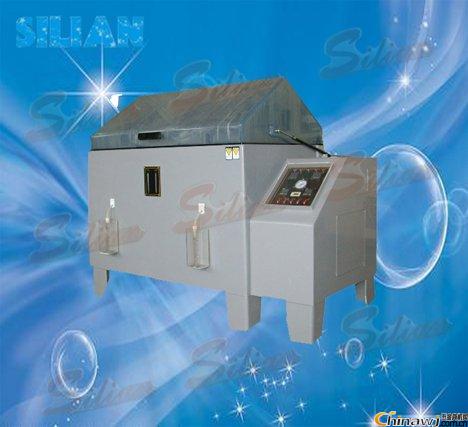Standards and Test Methods for Salt Spray Tests A brief summary of the standards for salt spray tests and a brief description of salt spray test methods. Standards are uniform provisions for repetitive things and overviews. The salt spray test standard specifies the salt spray test conditions, such as temperature, humidity, sodium chloride solution concentration and pH value, and also sets technical requirements for the performance of the salt spray test chamber. The salt spray test standard for the same product is selected according to the characteristics of the salt spray test, the corrosion rate of the metal, and the sensitivity to salt spray. The following describes several salt spray test standards, such as GB/T2423.17-1993 "Basic environmental test procedures for electrical and electronic products test Ka: salt spray test method", GB/T2423.18-2000 "Electrical and electronic products environmental test part 2 : Test test Kb: salt spray, alternating (sodium chloride solution), GB5938-86 "corrosion resistance test method for metal plating and chemical treatment layer of light industrial products", GB/T1771-91 "color paint and varnish resistant Determination of salt spray performance.
The salt spray test has three kinds of tests: neutral salt spray test (NSS), acetate spray (AA SS) and copper accelerated acetate spray (CA SS, also known as copper chloride acetate spray). It is a neutral salt spray test. The basic content of the salt spray test is a 5% sodium chloride aqueous solution sprayed in a test chamber at 35 degrees Celsius to simulate an accelerated corrosion method in a seawater environment. The length of the tolerance time determines the corrosion resistance. The volume of the salt spray box is not less than 012 m3, preferably not less than 014 m3, the temperature inside the box is 35 °C ± 2 °C, the spray pressure is 70-170 kPa, the salt spray collector is at least two, and the collection area is 80 cm2. The test surface and the vertical direction 15~30° let the salt spray settle freely on the measured surface, can not be directly sprayed, test the bracket glass, plastic manufacturing, the test pieces can not touch each other, drip each other; the temperature inside the box is 35 °C ± 2 ° C, each collection The collected solution was averaging 1~2ml per hour (averaged over 16 hours).
The purpose of the salt spray test is to assess the salt spray corrosion quality of products or metal materials. The salt spray test results are judged on the quality of the product. The judgment result is correct and reasonable. It is a correct measure of the product or metal salt spray resistance. The key to corrosion quality. The methods for determining the salt spray test results include: rating determination method, weighing determination method, corrosion occurrence determination method, and corrosion data statistical analysis method. The rating determination method divides the percentage of the ratio of the corrosion area to the total area into several levels according to a certain method, and uses one level as the basis for the qualification judgment, which is suitable for the evaluation of the flat sample;
The weighing determination method is to evaluate the corrosion resistance quality of the sample by calculating the weight of the corrosion loss by weighing the weight of the sample before and after the corrosion test. It is especially suitable for assessing the corrosion resistance quality of a certain metal;
The corrosion occurrence determination method is a qualitative determination method, which determines the sample after the salt spray corrosion test, whether the product is corroded or not, and most of the general product standards adopt this method;
The statistical analysis method of corrosion data provides a method for designing corrosion tests, analyzing corrosion data, and determining the confidence of corrosion data. It is mainly used for analysis and statistical corrosion, rather than for specific quality determination of a specific product. Http://news.chinawj.com.cn
 Editor: (Hardware Business Network Information Center) http://news.chinawj.com.cn
Editor: (Hardware Business Network Information Center) http://news.chinawj.com.cn 
It is a construction product that is made by casting concrete in a reusable mold or "formwork", then curing it in a controlled environment, transporting it to the construction site and lifting it in place ("tilting upward "). Instead, the standard concrete is poured into the form of a specific location and cured on site. Recently, expanded polystyrene has been used as the core of prefabricated wall panels. It is lightweight and has better thermal insulation properties.
As Cast Concrete Formwork,Cast Formwork Construction,Concrete Cast Formwork,Concrete Wall Form Systems
Anshan Lijian Engineering Group Co. LTD , https://www.lijianformwork.com